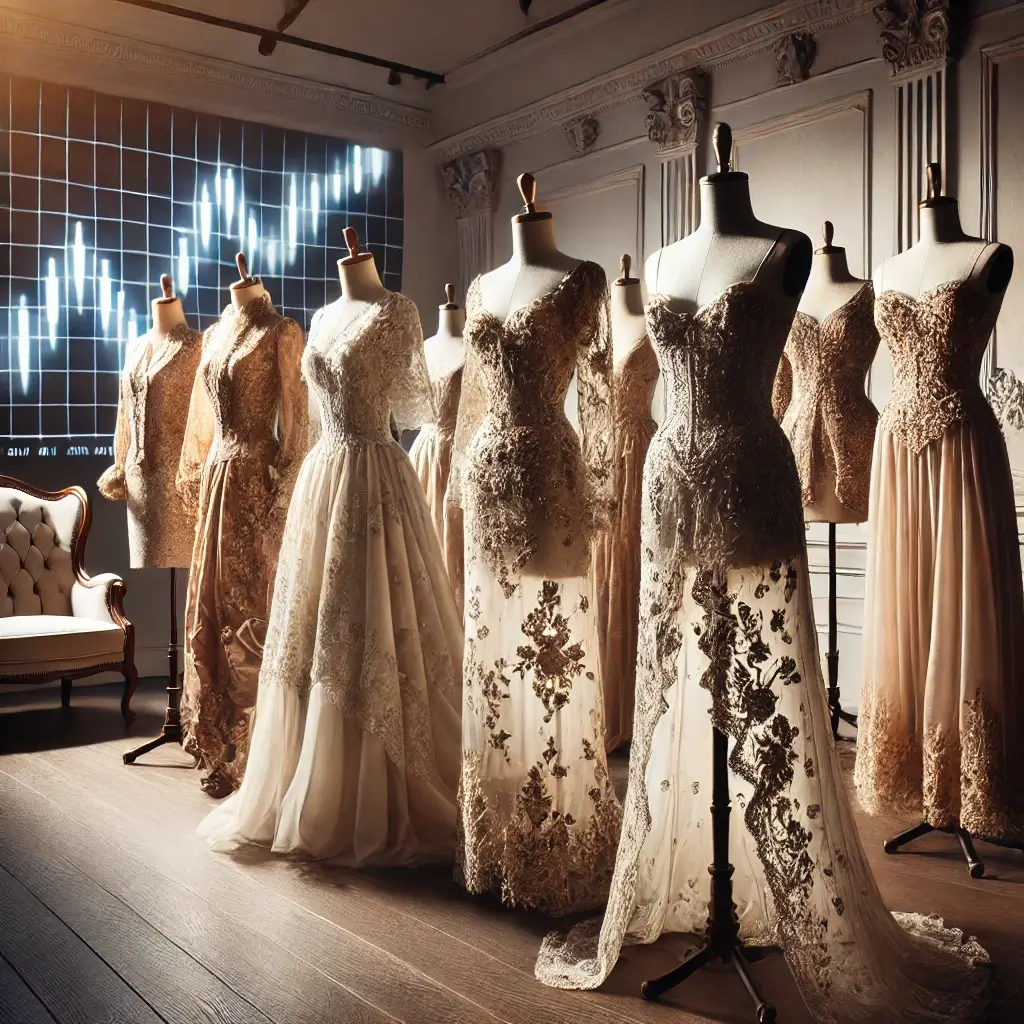The Timeless Elegance of Fashion’s Finest Treasures
Vintage haute couture is more than just clothing; it’s a statement of timeless elegance and a lucrative investment opportunity. These extraordinary garments, handcrafted by the world’s most prestigious designers, encapsulate fashion history while offering significant financial growth potential. For those with a passion for style and a keen eye for market trends, haute couture collection building is an art and a science.
From Luxury Garments to Cultural Assets
Today, haute couture pieces have transcended their original purpose as luxury garments to become cultural and financial assets. According to the Luxury Collectibles Report by Art Market Research, vintage haute couture has demonstrated an impressive average annual return of 17% over the past decade (Art Market Research, 2024). This performance rivals traditional investment options, providing collectors with a unique blend of aesthetic and monetary rewards. As the market for vintage haute couture evolves, it is increasingly recognized as an essential component of a diversified portfolio.
Strategic Collection Building for Discerning Investors
Collecting haute couture requires strategic thinking, knowledge of fashion history, and an understanding of market dynamics. By targeting specific eras, investing in authenticated pieces, and leveraging emerging trends, investors can build a collection that combines artistic integrity with financial value. This article delves into the strategies behind successful haute couture collection building, highlighting key periods and market trends that drive value.
Investment Research & Trends
Golden Age (1947–1957): Dior’s Revolution
Dior’s New Look: The Foundation of Haute Couture Investment
Christian Dior’s New Look era is a cornerstone of haute couture investment. Pieces from this transformative period, such as the iconic 1947 Bar suit, have shown extraordinary returns. A 1955 Bar suit recently sold for $60,000, up from $15,000 just a few years ago, reflecting a compound annual growth rate of over 30% (Morgan Stanley, 2024). This era epitomizes the innovation and craftsmanship that collectors covet.
The Space Age Revolution in Fashion
The Modernist Period brought bold experimentation to haute couture. Designers like Pierre Cardin and André Courrèges pushed the boundaries of form and material, creating iconic space-age designs. Market data from Christie’s reveals that these futuristic pieces have appreciated at an average annual rate of 22% since 2019, with standout items exceeding expectations (Christie’s, 2023). For collectors, this era represents a chance to own a piece of fashion history that continues to grow in value.
The New Classics: Late 20th Century Investment Opportunities
Emerging designers of the late 20th century, such as Christian Lacroix and John Galliano, have become increasingly sought after. These designers bridged tradition and modernity, creating pieces that are now highly collectible. Sotheby’s reports that couture from this period has seen appreciation rates of 15–20% annually (Sotheby’s, 2024). Investing in these modern classics provides an entry point into haute couture collecting with strong growth potential.
Market Forces Reshaping Haute Couture Collection
Global Trends Shaping the Market
The Sustainable Luxury Movement
Sustainability: Growing interest in sustainable luxury has amplified demand for vintage haute couture. Collectors value these pieces for their durability and timeless appeal.
Cultural Recognition Elevating Market Value
Institutional Recognition: Museums and cultural organizations are acquiring haute couture for exhibitions, lending stability and prestige to the market (Deloitte, 2024).
Global Expansion of the Collector Base
Emerging Markets: New wealth in Asia and the Middle East has expanded the collector base, driving demand and increasing auction prices.
Building Your Investment Collection
Smart Strategies for Collection Building
The Critical Importance of Verified Provenance
Authentication is the cornerstone of successful haute couture collecting. Verified provenance—including house labels, editorial features, and purchase records—adds significant value to a piece. According to the Journal of Fashion Theory, authenticated pieces with celebrity provenance can command premiums of up to 150% (Journal of Fashion Theory, 2024).
Preserving Value Through Expert Conservation
Maintaining a garment’s condition is critical. Professional conservation methods, such as proper storage and expert cleaning, can enhance long-term returns. The Costume Institute’s guidelines highlight that professionally preserved pieces achieve significantly higher auction results (Costume Institute, 2024).
Strategic Market Entry for Maximum Returns
Successful collectors pay attention to market timing. Investing in emerging categories or undervalued designers can yield substantial rewards as these pieces gain recognition. Building relationships with reputable dealers and auction houses is essential for early access to high-potential items.
The Art and Science of Haute Couture Investment
Building a haute couture collection is both an art and an investment strategy. By understanding market dynamics, focusing on authenticated and well-preserved pieces, and staying attuned to emerging trends, collectors can create portfolios that are as financially rewarding as they are aesthetically satisfying. Vintage haute couture offers a unique intersection of culture, history, and economic opportunity.
The Enduring Legacy of Fashion’s Finest Creations
As the market continues to evolve, the enduring appeal of haute couture ensures its place not only in the annals of fashion but also as a cornerstone of sophisticated investing. For collectors, the journey is as enriching as the destination, combining a passion for style with a smart approach to building wealth.
Industry Research and Market Analysis
References
Art Market Research. (2024). Luxury Collectibles Report.
Morgan Stanley. (2024). Luxury Goods Market Analysis.
Christie’s. (2023). Fashion Arts Department Market Review.
Sotheby’s. (2024). Luxury Fashion Market Analysis.
Journal of Fashion Theory. (2024). Market Study on Haute Couture Collecting.
Costume Institute. (2024). Preservation Guidelines for Haute Couture.
Deloitte. (2024). Art & Finance Report.
